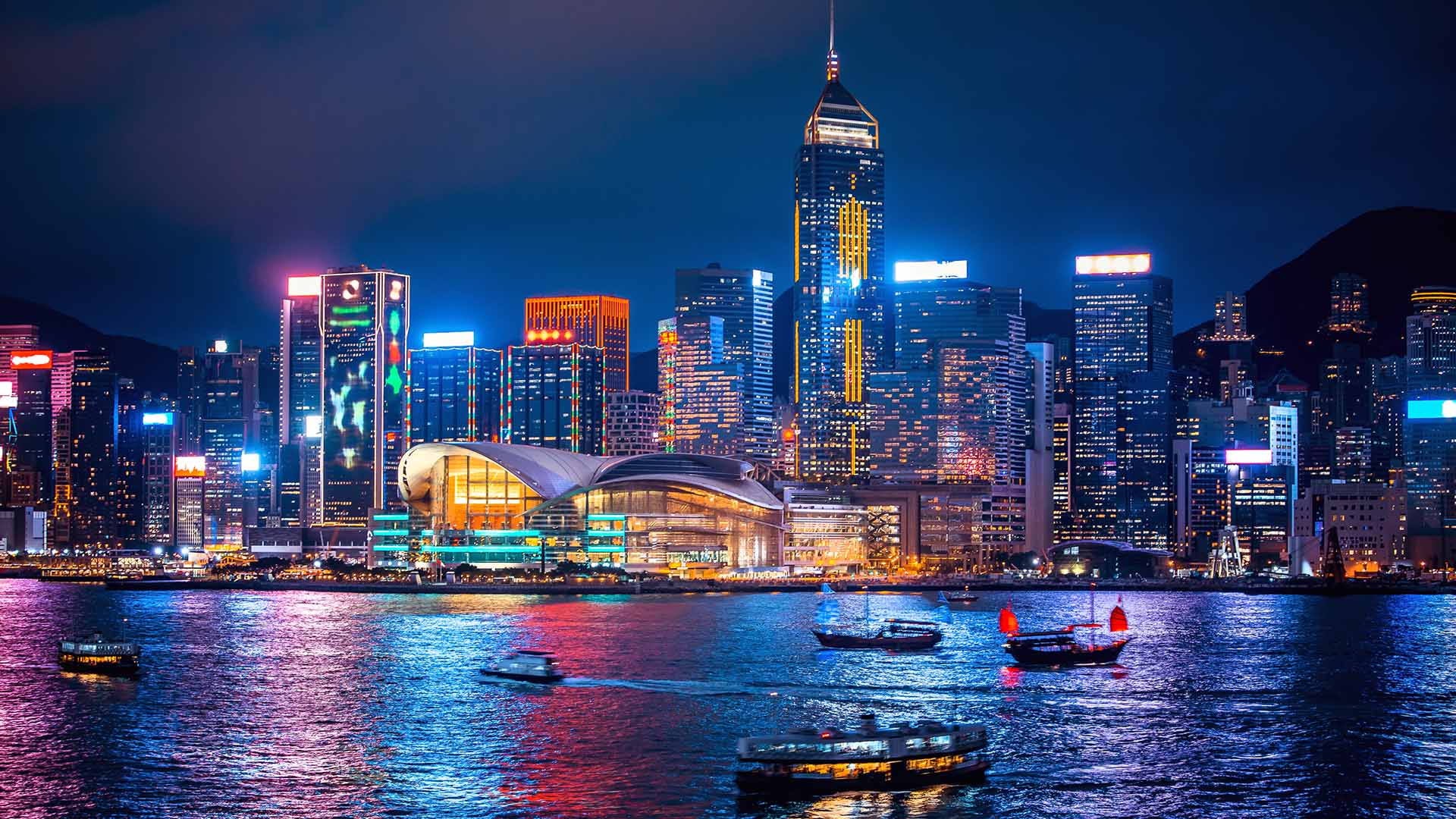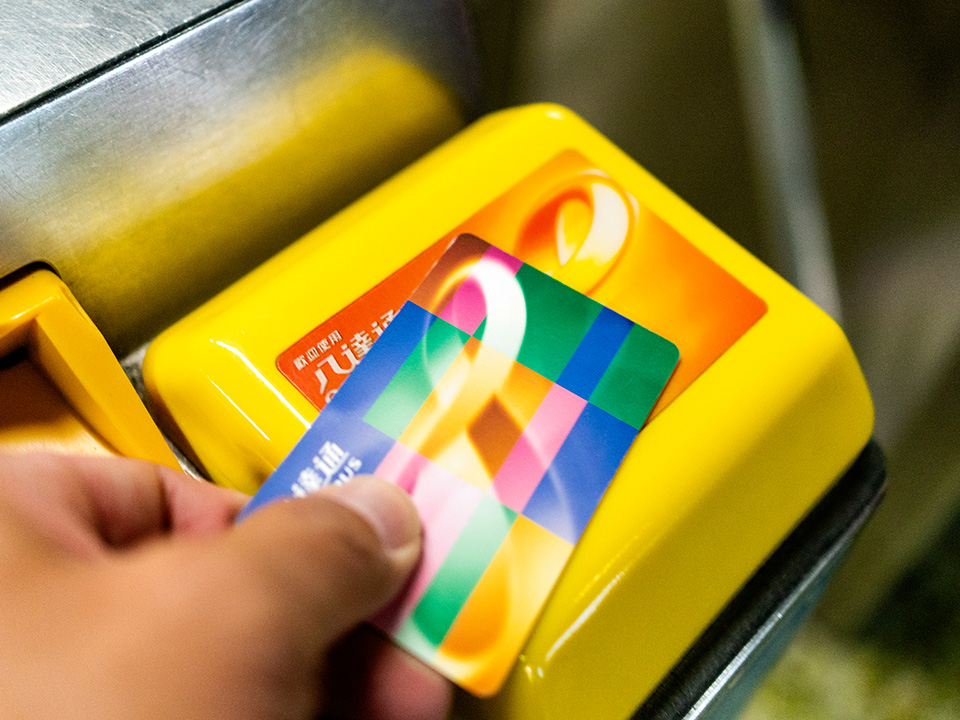
To maximise your time in one of the world’s most amazing cities, we’ve got 10 useful tips that cover everything from what to bring, to getting around, plus advice on the best places to eat, shop and play in Hong Kong.
1. Learn the lingo
Being familiar with the local language of a place can really enhance your travel experience. Cantonese is undoubtedly a tricky language to master — it includes half a dozen different tones, for one thing — but it’s still a great idea to learn some basic phrases. Try saying ‘nei hou’ to someone — it means ‘hello’ — or, to thank them, either ‘mm goy’ or ‘doh jeh’. (The former is the more regular ‘thank you’ you would say to a shop assistant or waiter; the latter is for a person who gives you a gift.) Watching a Hong Kong film or two is a great way to hear some Cantonese sounds while also learning more about the culture. Start with a classic Bruce Lee martial arts film, then head to the Avenue of Stars in Tsim Sha Tsui when you’re in Hong Kong to find his statue!
2. Bring something warm
Hong Kong is a great place to visit any time of year, though the summer months (June to August) can be quite hot and humid. Despite this, while you might be tempted to bring mostly swimwear and sarongs for summer, you do need to be wary of the air-conditioning. The AC can be set at pretty high levels in shopping malls, in cinemas and on public transport in Hong Kong. So, don’t forget to pack a jacket!

3. Know your typhoon signals
Hong Kong experiences around six typhoons a year on average, most of them mild. If you’re visiting in spring or summer, there’s a chance you’ll encounter one of them. Thankfully, the city has a warning system to help keep everyone safe. The system grades storms from 1 to 10. Signal No. 1 (or ‘T1’) is the weakest grading; it refers to a tropical cyclone that’s far from Hong Kong but could still have some affect. At the other end, the very rare Signal No. 10 (‘T10’) denotes strong sustained wind speeds above 118 km/h and destructive force. Once you get up to T8 level, some shops and services may close, but chain restaurants and the MTR (short for ‘Mass Transit Railway’, Hong Kong’s extensive train system) continue to operate. At T9 or above, visitors should stay indoors. The HKO app provides weather warnings about typhoons, rain and thunderstorms.

4. Grab an Octopus card
The Octopus card is the easiest way of paying for any public transport in Hong Kong. But it doesn’t just provide simple access to trains, trams and ferries; you can also purchase cinema tickets with it, or use it for vending machines and at convenience stores, supermarkets and a wide range of restaurants and chains. The cards can be bought and topped up at 7-Eleven and Circle K stores and MTR stations. There’s also a Mobile Octopus option, which allows you to download the Octopus for Tourists app and then just tap-and-ride or top up directly from a credit or debit card without queueing. (And you can get a refund of the remaining money on your card when you leave.)
5. Get a free MTR ride with the Airport Express
If you buy an Octopus card on arrival at the Hong Kong International Airport, you can immediately put it to good use on the Airport Express, which forms part of Hong Kong’s MTR network. The Airport Express takes you from the airport to Central in only 24 minutes — and it also gives you a free interchange on the MTR, which means you can jump on a train to your final destination without paying for that second leg.

6. Take things slow
Traditional modes of transport in Hong Kong are a superb way of seeing the city in a more relaxed manner. One example is the famous Star Ferry, which has shuttled commuters across Victoria Harbour for well over a century. The views of Hong Kong Island and Kowloon from the ferries are incredible, and the journey across the harbour starts from just HK$2.60. Then there’s the tram (or ‘ding ding’ as the locals call it), which is almost as old as the Star Ferry and another excellent way to explore Hong Kong Island. Make sure you head up to the top deck for the best views; use your Octopus card to pay the flat fare of just HK$3.
7. Head to the hills for a hike
Download MyMapHK for free, a great walking/hiking app that will help you navigate Hong Kong’s stunning country parks. The app gives you convenient access to official Lands Department maps, which have everything you need for taking a short stroll or an epic full-day hike in nature. Its tools allow you to search for routes, measure distances, share your current map view with others and more. It’s a useful aid for navigating the city itself, too — click on the ‘Old Hong Kong’ setting to see how the city used to look in days gone by.

8. Sample traditional food and drinks
This is one of the world’s most famous cities for dining, whether it’s a humble bowl of noodles, an egg tart at a bakery, or a tasty plate of char siu pork from a roast meat shop. Vegan and plant-based options are on the rise, too. And don’t miss the chance to eat at a cha chaan teng, or ‘tea restaurant’. These fast-paced diners are loved by locals for their delicious comfort food. Try a baked pork chop rice (‘guk ju pa fan’), and wash it down with an order of Hong Kong milk tea.

9. Shop up a storm
The retail scene is massive in Hong Kong, from impressive malls such as ifc mall and Pacific Place on Hong Kong Island, ELEMENTS and K11 MUSEA in Tsim Sha Tsui, to areas like Causeway Bay and Mongkok, with their quirky stores, boutiques and markets. Speaking of markets, Central Market is an 80-year-old heritage building given a new lease of life, now a hotspot for new shopping, dining and leisure experiences. PMQ, short for ‘Police Married Quarters’, is another transformed historic site, offering fab eats, boutiques and pop-ups. Oh, and bring your own shopping bag: the levy on plastic bags in Hong Kong was doubled in December 2022 to promote reusable bags and protect the environment.

10. Travel more sustainably
Speaking of the environment in Hong Kong, a great tip for visitors is to download the Water for Free app. It shows you where the nearest drinking fountains with fresh water are located in the city. By listing more than 1,500 water dispenser locations, the app helps reduce plastic use in Hong Kong, along with the resulting pollution. So, remember to bring a refillable water bottle and download the app in advance!
Want to make your trip to Hong Kong even more memorable? Try these 8 off-the-beaten-path things to do when you visit!
Information in this article is subject to change without advance notice. Please contact the relevant product or service providers for enquiries.
The Hong Kong Tourism Board disclaims any liability as to the quality or fitness for purpose of third party products and services; and makes no representation or warranty as to the accuracy, adequacy or reliability of any information contained herein.




